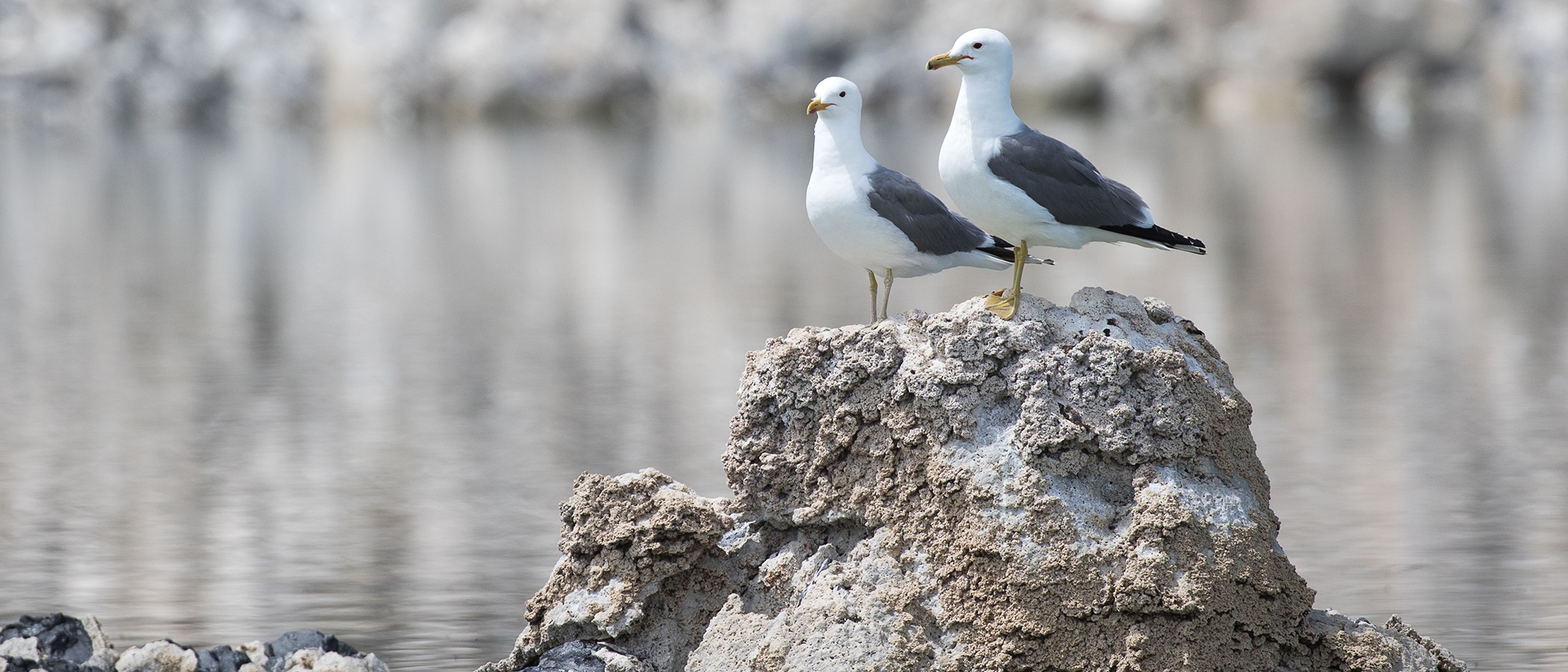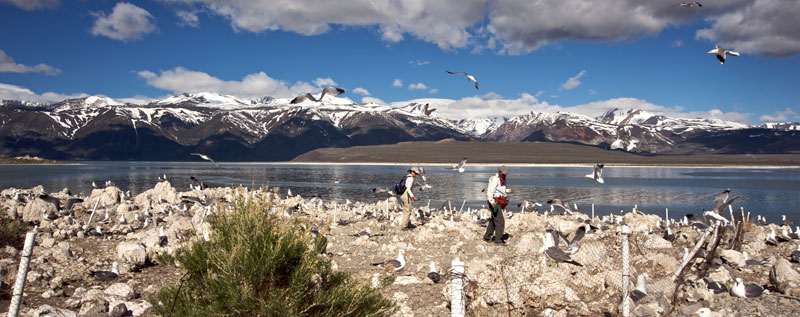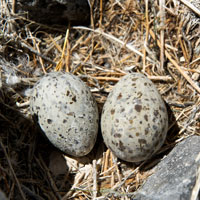

Every Memorial Day weekend, PRBO Conservation Science and Mono Lake Committee volunteers count California Gull nests on Mono Lake’s islets as part of a study that has taken place annually since 1983. This year, PRBO’s Kristie Nelson reported that over three days, the group counted 20,056 nests, which was much better than last year’s tally of only 16,700 nests. However, it is still below the long-term average of 23,000.
A number of factors affect the gulls’ success each spring; this year the early warm temperatures and high numbers of shrimp in Mono Lake offered good conditions for nesting. In a few weeks Kristie and her crew will return to the islets to count and band chicks in order to estimate nesting success.
Visit the Mono Basin Clearinghouse to see the comprehensive series of gull research reports.
Top photo courtesy of Point Blue Conservation Science.


Could this be more efficently accomplished and with less animal disruption through air photos?
Hi Bob,
That’s a good question to ask and one we’ve discussed quite a bit in the last year or 2. Air photos were tried one year with discouraging results (this was before my time, but from what the biologist in charge then told me). The gulls blended in with the background and topography of the nesting islets amazingly well, combined with terrain that casts shadows, rocky outcrops that obscure places, and non-incubating adults standing around, they didn’t feel the photos yielded good results. They also don’t save much time; it takes a lot of time to analyze all those photos. (Although more time would be worth it if the photos yielded good results and took away the need to go out on the colony).
So, aerial photos are not the easy answer, but also they are out of the question, either. We’ve also tried running statistics comparing our sample plots to the entire population to see if just counting a sample of the population would give an accurate count. Alas, the predictive value of our sample plot data was not good at estimating the population size. So, I’m still searching for a more efficient, less disturbing method, but we’ve not come up with one yet.